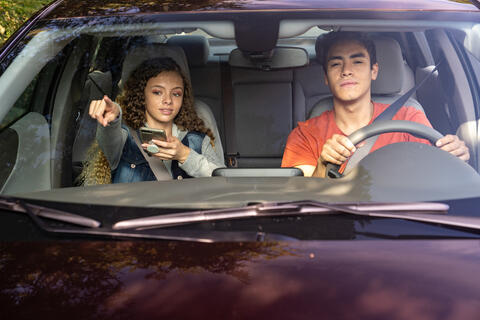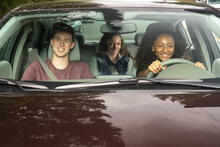Traffic Safety: Teens and Young Adult Drivers
Teens and young adults have less driving experience which puts them at higher risk for crashes. Inexperience combined with the following behaviors increase risk for crashes:
- Using alcohol and drugs
- Not wearing a seat belt
- Distracted driving
- Driving with passengers
- Speeding
- Driving while drowsy
Teen and young adults can reduce their risk by never driving while under the influence of alcohol or drugs and wearing a seat belt.
Wisconsin injuries and deaths involving teens
2019-2023 Wisconsin data show:
- Between 2019 and 2023, 201 Wisconsin residents ages 15–19 lost their lives on the road. Any death due to a motor vehicle accident is preventable.
- Young adults and teens experience some of the highest rates of emergency department visits for motor vehicle traffic accidents – and even mild injuries can result in lifelong impacts. Between 2019 and 2023, 9% of motor vehicle accident emergency department visits among teens (ages 15–19) also involved a traumatic brain injury (TBI). TBIs can alter how people think, learn, and interact with others and can be especially impactful while the brain is still developing. Learn more about TBI on the DHS TBI webpage.
Source: Wisconsin Department of Health Services, Division of Public Health, Office of Health Informatics. Wisconsin Vital Records Data. Wisconsin Hospital Discharge Data. Pulled 01/27/25.
Teen driver safety risks
The following information is data from the 2023 Youth Risk Behavior Survey.
- Driving under the Influence: Almost 1 in 15 Wisconsin high schoolers have driven after drinking, and almost 2 out of 10 Wisconsin high schoolers previously rode with someone who had been drinking. While both numbers have decreased over the past decade, continuing to reduce drinking and driving is a priority.
- Cell phone and electronics: Nearly 5 out of 10 Wisconsin high schoolers have sent an email or text while driving a vehicle. Put down or turn off the phone while driving to reduce distractions.
- Seat belt use: Seat belts make riding or driving in a car safer. Data show 4 out of 10 Wisconsin high schoolers do not always wear a seat belt, putting them at risk for injury.
- Passenger interactions: Passengers can distract young drivers, and peer pressure can encourage them to take risks.
- Nighttime driving: Young drivers typically have less experience driving at night, when drowsiness and alcohol and other drugs may play a bigger role.
- Driving in poor weather conditions: Driving in the rain, snow, and ice is more difficult and dangerous for everyone, but young drivers often have less experience driving in these conditions.
What can you do as a teen or young adult to reduce risk
- Accept you are still learning and have less experience behind the wheel. If in doubt don’t do it.
- Avoid distractions while driving, like your cell phone. Talking on a cell phone or texting while driving is dangerous. Wisconsin state law bans all cell phone use if you have a probationary license.
- Never drink and drive.
- Never drive while under the influence of marijuana or other drugs.
What can you do as a parent to reduce risk
- Teens and young adults look to their parents and caregivers as role models. Drive safely to help your child do the same.
- Talk with your child about peer pressure and the dangers of impaired driving. Make plans with your child for safely picking them up if they are in an unsafe situation, such as being dependent upon an impaired person to get home.
- More practice is always better. Set aside some time each week to help your young driver develop driving skills in a variety of weather conditions.
References
- U.S. Department of Transportation
- Wisconsin Department of Transportation, Teen Driver Safety in Wisconsin (PDF)
Questions
If you have questions about data presented on this page, email the Wisconsin Department of Health Services, Division of Public Health Data Resource Center at DHSDPHDataResourceCenter@dhs.wisconsin.gov.



